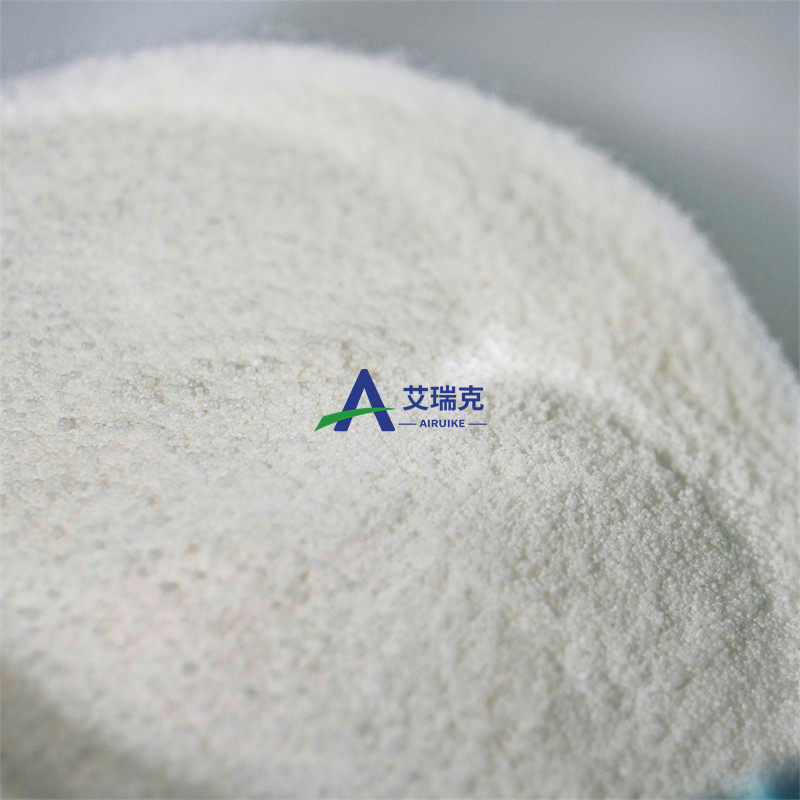The latest research progress of induced pluripotent stem cells (phase 3)
-
Last Update: 2019-10-28
-
Source: Internet
-
Author: User
Search more information of high quality chemicals, good prices and reliable suppliers, visit
www.echemi.com
October 28, 2019 / Biovalley BIOON / - -- induced pluripotent stem cells (iPS cells) were originally used by Japanese scientist Shinya Yamanaka in 2006 to transfer four transcription factors (Oct4, Sox2, The combination of KLF4 and c-myc) is transferred into mouse embryo or skin fibroblast and reprogrammed to obtain a cell type similar to embryonic stem cell These iPS cells are very similar to embryonic stem cells in morphology, gene and protein expression, epigenetic modification, cell multiplication, embryoid and teratoma formation and differentiation In November 2007, Thompson laboratory and Tanaka laboratory, led by Chinese scientist Yu Junying, reported almost at the same time that they successfully induced human skin fibroblasts to become IPS almost identical to embryonic stem cells Cells, the difference is that Japanese laboratories still use retroviruses to introduce OCT3 / 4, Sox2, c-myc and KLF4 factor combinations, while Thompson laboratories use lentiviral vectors to introduce Oct4, Sox2 plus nano and Lin28 factor combinations Compared to embryonic stem cells IPS cells will not cause ethical problems Moreover, iPS cells can be reprogrammed into iPS cells by using the host's own adult cells (such as skin cells, blood cells, etc.) and transplanted back to the same individuals, which may not cause immune response In addition, iPS cells are very suitable for building disease models, but there are risks when iPS cells are used for treatment: iPS cells are transplanted into the body May produce tumors It is worth noting that in recent years, Japanese scientists have carried out clinical trials based on iPS cells in human body to treat diseases and achieved some success Based on this, in view of the progress of iPS cell research in recent years, the editor combed it for the readers 1 PNAs: transforming human induced pluripotent stem cells into testosterone producing Leydig cells doi: 10.1073/pnas.1908207116 In a new study, researchers from the University of Southern California and McGill University in Canada have successfully created testosterone producing cells in the human body in the laboratory, which paves the way for the use of personalized alternative cells to treat patients with low testosterone one day Relevant research results were published online in PNAS on October 7, 2019, and the title of the paper is "directing differentiation of human induced pluripotent stem cells toward Android producing Leydig cells rater than alternative cells" In this paper, they describe how they turn stem cells into functional Leydig cells - cells in the testes that produce male sex hormones A high magnification micrograph of the Leydig cells of the testis from nepron / Wikipedia Specifically, Papadopoulos and his team used stem cells called human induced pluripotent stem cells (hiPSC), which are produced by reprogramming cells from human blood or skin and can differentiate into any type of cell needed for treatment Intuitively, Papadopoulos added human collagen to the cell culture medium, and added the genes and other nutrients needed to transform hiPSC into Leydig cells of testis Collagen is a common growth matrix component Previously, Papadopoulos used bovine collagen or rat collagen, which were cheaper and could be exchanged with other forms of collagen, at least in early experiments This time, the laboratory made Leydig cells produce testosterone, and these cells look even like the natural Leydig cells under the microscope 2 Biochem Pharmacol: discovery of a new method to promote the maturation of cardiac cells doi: 10.1016/j.bcp.2019.08.010 scientists from the Masonic Medical Research Institute (mmri), in cooperation with nanion technologies, recently published a study on biochemical pharmacology, which solved the problem of potassium (K +) current inducing human pluripotent stem cell-derived cardiomyocytes (sips) C-cms) In this study, mmri scientists determined whether the stimulation of H IPS c-cms by two different types of K + channel activators, i.e instantaneous outward K + current (ITO) and fast delayed rectifier K + current (IKr), could improve the repolarization reserve and produce more mature cardiac cells These experiments focus on the field of electrophysiology, that is, studying the electrical properties of biological cells and tissues The results show that in hiPSC CMS, the activator can only enhance the IKr current, but not the ITO current However, IKr alone improved the repolarization reserve of hiPSC CMS and differentiated cardiac cells more fully In addition, their study also found that only one K + channel in hiPSC CMS was induced by double activators; in mature heart cells, the same activator can activate two channels at the same time These data suggest that the conclusion of the pharmacological action between the c-cms and mature adult heart cells needs to be reviewed 3 Nature: the first in the world! A Japanese woman successfully received a corneal transplant made of reprogrammed stem cells! Doi: 10.1038/d41586-019-02597-2 recently, a Japanese woman in her forties became the first person in the world to use reprogrammed stem cells to repair the cornea At a press conference on August 29, kohji Nishida, an ophthalmologist from Osaka University in Japan, said that the stem cells used to repair the cornea in her eyes In the event of loss, the cornea is a transparent layer covering and protecting the eyes, which will blur her vision and may lead to blindness To treat the woman, the researchers said their team used induced pluripotent stem cells (IPS) to make corneal cells, reprogramming skin cells from donors into embryonic like States, and then the cells could be transformed into other types of cells, such as corneal cells Researcher Nishida said the cornea in the woman's eyes has remained clear and her vision has improved since she underwent the transplant a month ago At present, patients with damaged or diseased cornea usually use cornea tissue from deceased donors for treatment, but in Japan, patients who need tissue such as cornea for transplantation have a long waiting list Today, Japan has approved iPS cells to take the lead in clinical application Previously, Shinya Yamanaka, a stem cell scientist from Kyoto University in Japan, won the Nobel Prize for stem cell research Japanese doctors also used iPS cells to treat patients with spinal cord injury, Parkinson's disease and another eye disease 4 ACS Nano: a new nanotechnology platform is expected to accelerate the research of stem cell transplantation doi: 10.1021/acsno.9b01875 recently, a research report published in the international journal ACS Nano, scientists from Rutgers University have developed a new nanotechnology through research, which may enhance the effect on stem cells Transplantation research is expected to help improve the treatment of a variety of diseases, including Alzheimer's disease, Parkinson's disease, other neurodegenerative diseases and central nervous system injury Photo source: Jin Ho Lee / Rutgers University New Brunswick The new nanotechnology platform, developed by researchers, uses special rod structures to sense, which can help researchers confirm the identity of human stem cells and corresponding biomarkers At the same time, it will not destroy these stem cells; this is a problem faced by researchers in the clinical research of stem cells, because it limits further analysis and biomedical application in the later stage Professor Kibum Lee, the researcher, said that one of the main obstacles faced by stem cell-based therapy is the destructiveness of standard cell characterization steps Based on the newly developed nanotechnology, we can accurately and sensitively characterize cells without damaging their vitality Using this new nanotechnology platform, researchers can monitor human stem cells by characterizing the new generation of biomarkers released by cells called exosomes The level and exosomes of the derived neuron cells play a key role in the signal transmission between cells Later researchers will continue to investigate the diversity of this new nanotechnology in other applications, such as the detection of neuron cells in the clinical environment 5 Circulation: scientists are expected to use stem cell derived cardiomyocytes to repair damaged hearts! Doi: 10.1161/circulationaha.119.040881 recently, in a research report published in the international journal Circulation, scientists from the University of Alabama, Birmingham, developed a new method through research, which may be able to use stem cells The derived cardiomyocytes can improve the repair of heart disease; after a heart attack, some muscle walls will die, which will make the heart unable to regenerate, and the dead tissue will compress the surrounding muscles, resulting in fatal cardiac expansion In this study, researchers developed a new method to improve the quality of transplanted cells They said that after testing in a mouse model of heart disease, they found that the transplantation rate of injected stem cells derived cardiomyocytes doubled This new method can select cells with complete functions and DNA in heterogeneous groups, so that they can adapt to clinical conditions, and more It can reconstruct the ischemic myocardium and improve the function of the failing heart Transplantation of heart cells requires millions of stem cells or their derived cells Cell proliferation under accelerated condition is a common means to obtain a large number of cells, but accelerated growth will also cause culture pressure, including lethal DNA damage These DNA damaged cells may not be suitable for cell transplantation Researchers say they can selectively induce programmed cell death (apoptosis) by activating the transcription factor p53 in pluripotent stem cells )Cells with DNA damage, especially those without DNA damage, will also retain cells without DNA damage; researchers can activate the expression of p53 by using MDM2 inhibitor (nutlin-3a) After nutlin-3a treatment, the dead cells will be washed out of the culture solution, and the remaining cells without DNA damage will grow normally and differentiate into cardiomyocytes; then researchers will develop 900000 cells Four weeks later, the researchers found a significant increase in the rate of implantation in the hearts of myocardial cells receiving no DNA damage (about 14%), while the rate of implantation of control derived cardiomyocytes was about 7% 6 Cell Metab: it is the first time to produce transgenic Mini liver tissue in the laboratory, which is expected to help research liver diseases and develop new therapies Doi: 10.1016/j.cmet.2019.06.017 recently, a research report published in the international journal cell metabolism, scientists from the University of Pittsburgh have developed transgenic (genetic) in the laboratory for the first time through research It may help to simulate the progress of human liver diseases and the development of new therapies In this paper, the researchers elucidated how they transformed genetically engineered human cells into functional 3D liver tissue that mimics NAFLD (non alcoholic fatty liver)
This article is an English version of an article which is originally in the Chinese language on echemi.com and is provided for information purposes only.
This website makes no representation or warranty of any kind, either expressed or implied, as to the accuracy, completeness ownership or reliability of
the article or any translations thereof. If you have any concerns or complaints relating to the article, please send an email, providing a detailed
description of the concern or complaint, to
service@echemi.com. A staff member will contact you within 5 working days. Once verified, infringing content
will be removed immediately.







